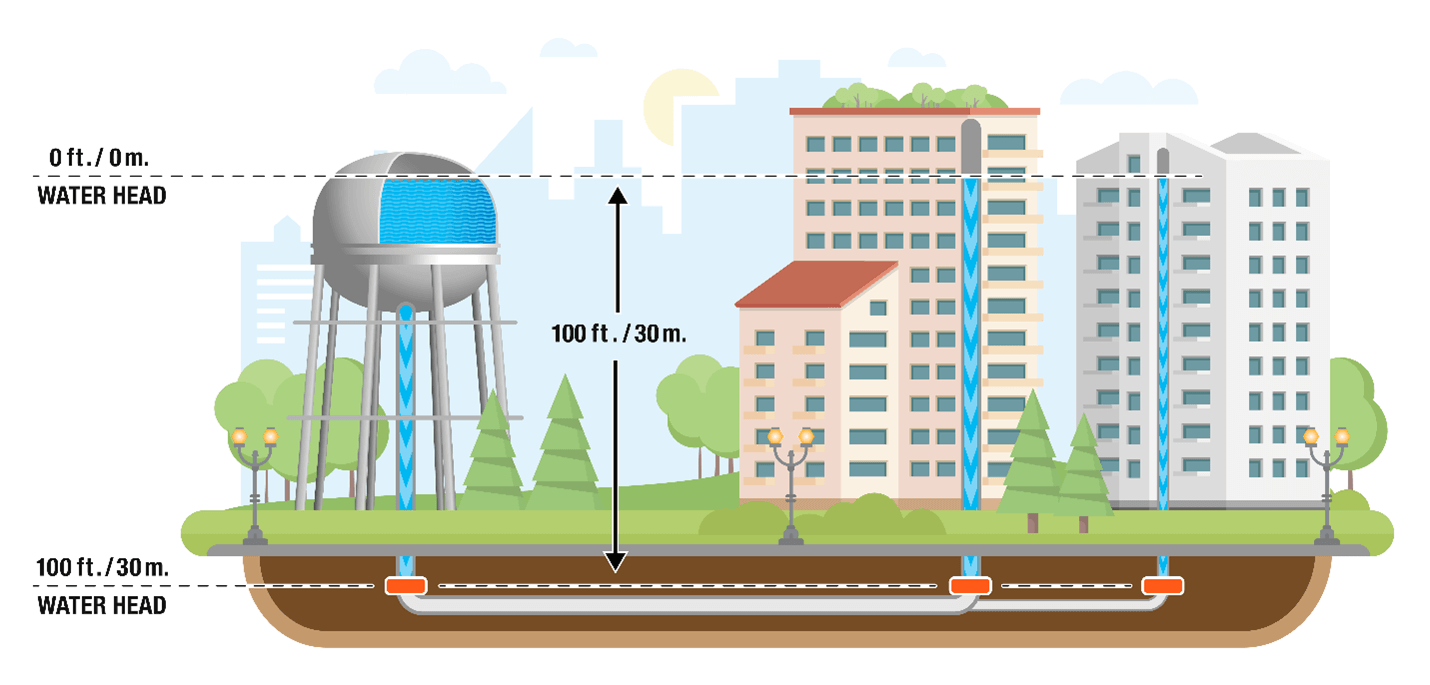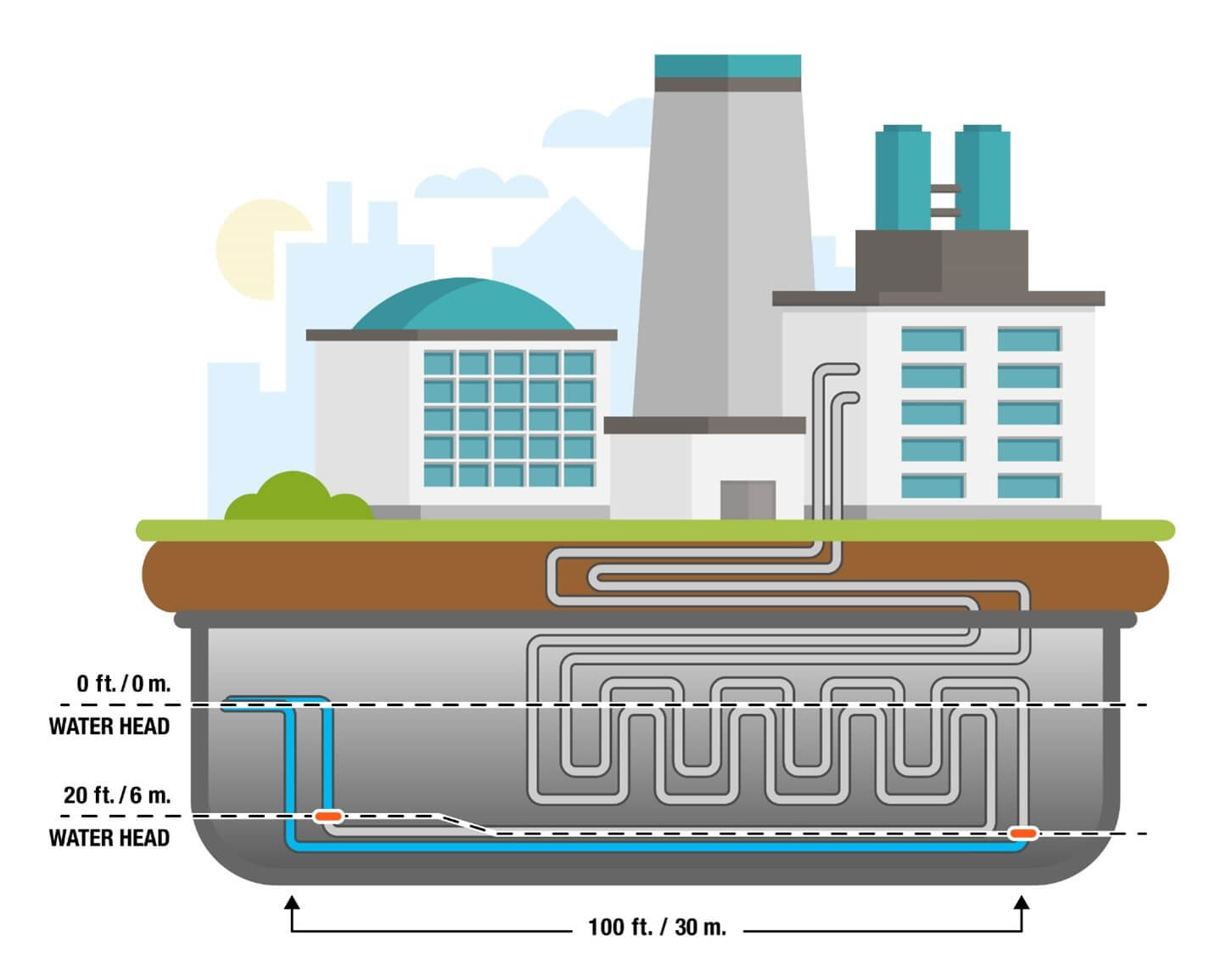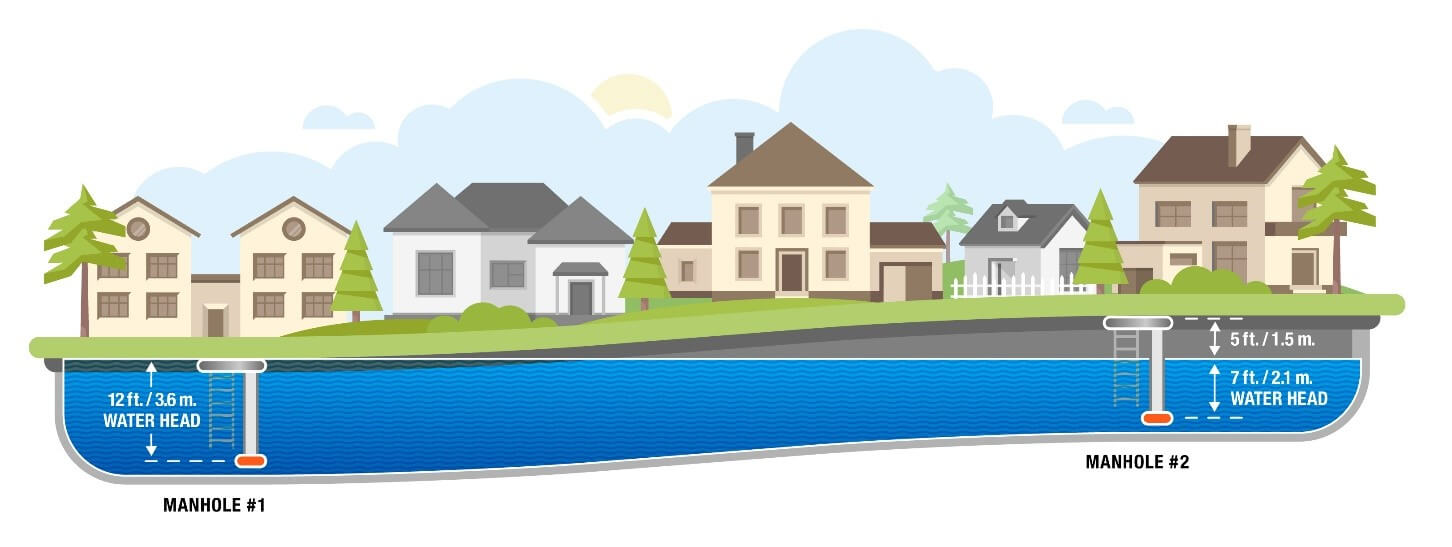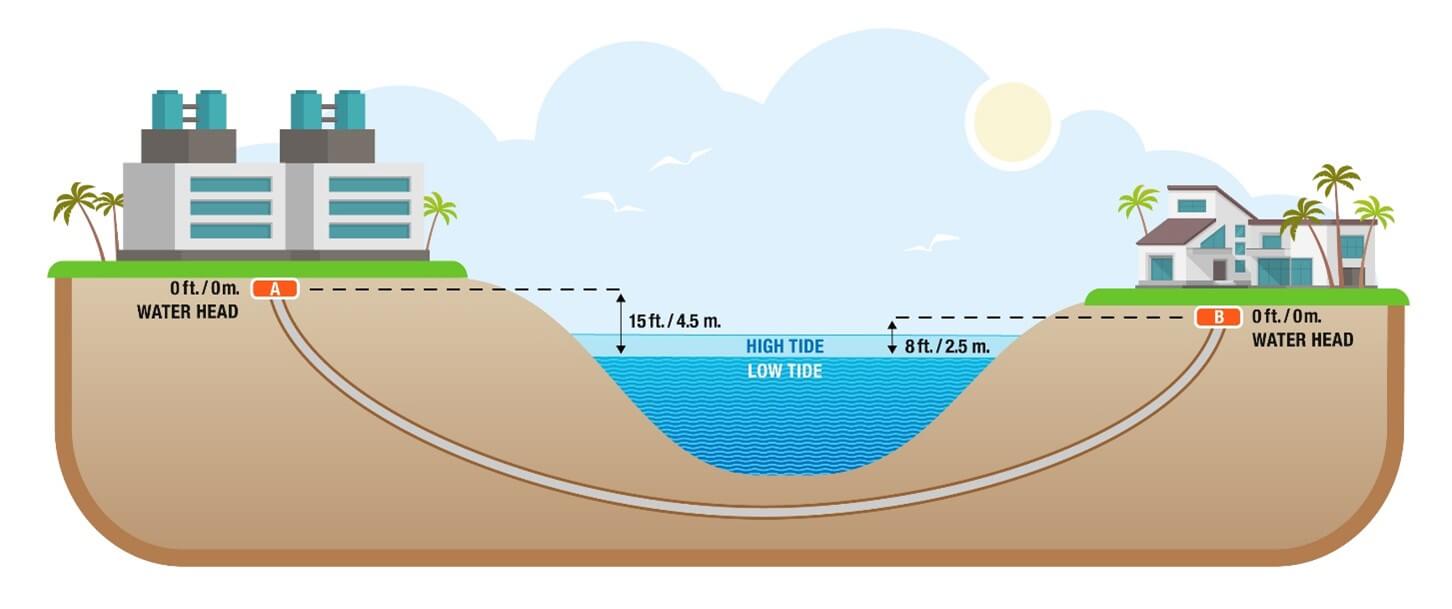Understanding How to Calculate Water Head Pressure
In infrastructure hardening, particularly when sealing against water, field professionals may be required to calculate water head pressure. This paper explains how to calculate water head pressure to help project planning.
Key Takeaways
- 1. Clarify how to measure water head pressure, and
- 2. Provide simple measurement instructions.

Water head pressure at a specific location is simply determined by the height (or depth) of the water above that location. Below, we walk through a few examples.

A 20-foot (6-meter) diameter water tower is 100 feet (30 meters) tall and is full. Thus, the water level is 100 feet (30 meters) above the ground. The water head pressure at the ground would be 100 feet (30 meters). The water head pressure is not affected by total volume of water, only by the height. Nearby, there are two ducts rising 100 feet (30 meters), a 2-inch (5 centimeters) and 4-inch (10 centimeters) duct. Both ducts are filled with water. The water head at the ground for each would also be 100 feet (30 meters). The total amount of water does not factor into the calculation of water head pressure, nor does the duct diameter. The only factors that matter are the height and depth of the ducts.
Widespread duct system

A manufacturing plant has a seal at the bottom of a complex duct system. The system spans hundreds of feet (meters) laterally at multiple heights with various diameter ducts. At one point, this system is filled with water to 20 feet (6 meters) above the seal. The water head pressure at the seal is 20 feet (6 meters). The size of the ducts and the lateral distance covered have no effect on the water head pressure. A second seal placed 100 feet (30 meters) away at the exact same depth also has 20 feet (6 meters) water head. Only the height of the water above the seal matters.
| Related Content: Sealing Conduits for Resilient Electrical and Telecommunication Systems |
If, in this same plant, there were a seal connecting two sections of duct and both duct sections contain water, the water head pressure on the seal would be the DIFFERENCE between the height/depth of the water on each side. 20 feet (6 meters) of water on side 1 versus 15 feet (4.5 meters) of water on side 2 would yield a water head pressure of 5 feet (1.5 meters), pushing from side 1 toward side 2. The 15 feet of pressure on side 2 is effectively resisting and offsetting the 20 feet of pressure on side 1.
Comparing manholes

Two manholes with identical depths (say 12 feet or 3.6 meters) are set at grade level, but due to a change in elevation, manhole 2, a city block away, is 5 feet (1.5 meters) higher than manhole 1. If the ground water level is the same depth for both manholes, the water head pressure for a sealed conduit at the bottom of manhole 2 is 5 feet (1.5 meters) lower than that of manhole 1. This is because when measuring from the bottom of the manholes, the water is 5 feet (1.5 meters) deeper for manhole 2. Note that, in this scenario, the conduits are empty, and the water head pressure is from the ground water pushing up on the seal.
| Related Content: Duct Seals Prevent Ruinous Water Damage |
However, consider two identical manholes, both 12 feet (3.6 meters) deep. Manhole 1 is located in Denver at 5,300 feet (1,615 meters) above sea level, and manhole 2 is located in Minneapolis at 830 feet (253 meters) above sea level. Both manholes are filled to the top with water. The water head pressure for a sealed conduit at the bottom of each manhole is 12 feet (3.6 meters). Elevation has no effect here. The information that matters is the depth of the water at each location.
Directional bores

Jupiter Island, Florida is served by electrical power supplied through conduits bored under the intercoastal waterway. The elevation of Jupiter Island is 15 feet (4.5 meters) above sea level, while the mainland has an elevation of 22 feet (7 meters). Regardless of the depth or shape of the bore, or the current tidal conditions, a seal on the island placed at 15 feet (4.5 meters) above sea level will be under no water head pressure because there is no water above it. Water head is always dependent on the water depth at that specific location. If, however, there is a sealed conduit exposed to the ocean at a depth of 10 feet (3 meters) at low tide, the water head at that seal is 10 feet (3 meters) at low tide. The water head pressure will increase as the water depth increases with the incoming tide.
Water head is the height of the water
Water head is simply based on the height of water in the system. A mechanical or foam seal can be made to keep water out of a system or to keep water within the system. In either case, the pressure on the seal is based on the water height. Though systems vary in their complexity, calculating water head is a straightforward concept.
| Related Product: Polywater® FST™ Foam Sealant |
Despite the information available on water head pressure, it is NOT affected by the following:
- The total amount of water,
- The diameter of the duct or conduit,
- The horizontal length of the duct or conduit, nor
- The geographical elevation of the system.
The examples in this paper illustrate that, no matter the complexity of the system, water head pressure is dependent only on the height (or depth) of the water above a specific location. If there is no water above the seal, there is no water head pressure.
| Related Content: “Let’s Talk Cabling” Video Podcast: Best Way to Seal OSP Conduit |